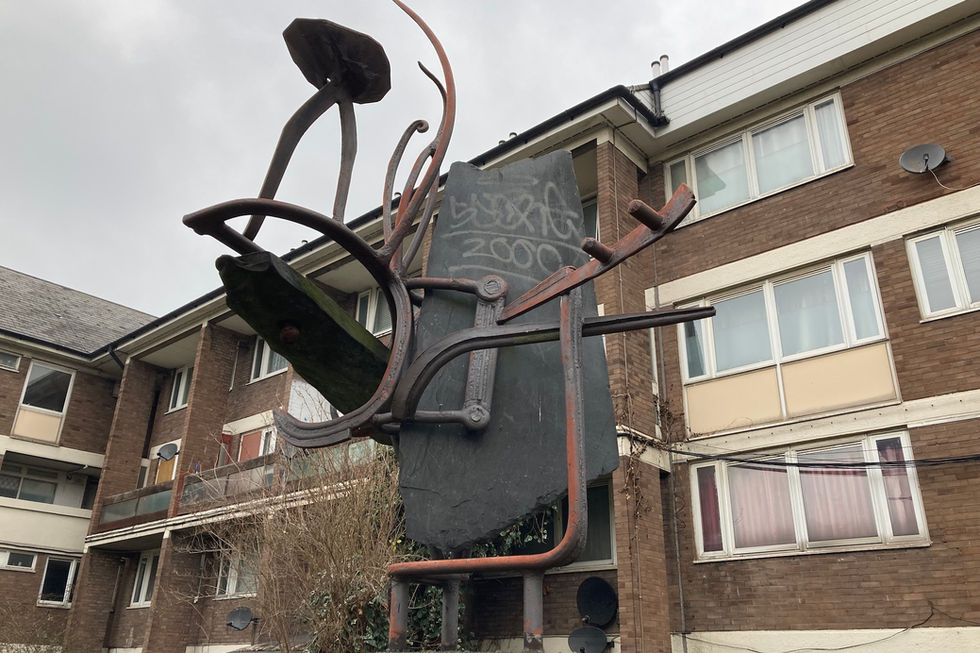
RECENT PROJECTS
ABOUT
DONATE
DONATE

Bryan Kneale ‘Slatehook’ sculpture
Restoration of the sculpture
Fenwick Estate, SW9 9ND
The artist Bryan Neale (1930–2025) studied at the Royal Academy, won the Prix de Rome, then spent a brief period in Italy painting, until, inspired by the sculpture Festival of Britain in 1951, he moved into welded sculpture. He taught at the Royal College of Art (1963-95) in the Sculpture Department. He exhibited widely and his work was acquired by private and public collections in the UK and internationally. In 1961, he was asked to create a sculpture for the LCC Patronage of the Arts Scheme for the newly built Fenwick Estate in Clapham. He was given no brief and wondered what to do. In a later interview he that the architect of the estate was small, and Kneale felt he designed the site to fit his size.
While visiting his birthplace, the Isle of Man, he saw a hedge with slate gateposts that reminded him of standing stones. He got two pieces of slate and made a small maquette. When he showed his maquette to the housing committee, there were concerns about whether it would be dangerous and that it should be placed on a high base. It was thought that water running down it would stop people from climbing on it. A water supply was installed, but before the work was completed, a boy dropped a marble into the trap on top before the cage was positioned, so it never worked. The maquette was later owned by Richard Attenborough.
The sculpture is intact and exists in the same form as artist originally intended - the metal parts have corrosion with areas of red oxide undercoat showing and the large slab of slate, which is held within the metal structure, has been graffitied. There is a black plastic-coated cable, with individual strands of wire protruding situated under the sculpture, embedded in the top of the plinth. The concrete plinth is heavily ingrained with dirt and chipped around the lower edge.
The conservation team will remove limescale deposits, clean the sculpture, fill cracks, colour match with stone fillers and cement, redress the lead around the steel and repaint with red oxide primer and iron oxide paint. The water bowl may be filled to stop water settling in it.




